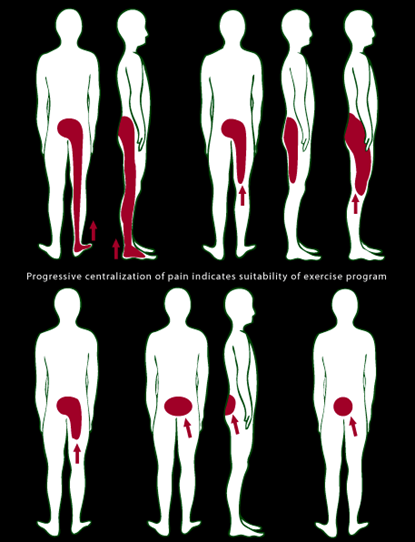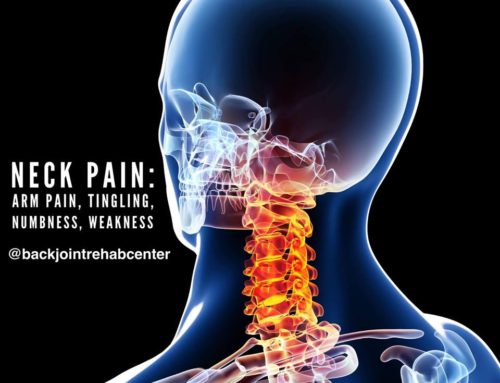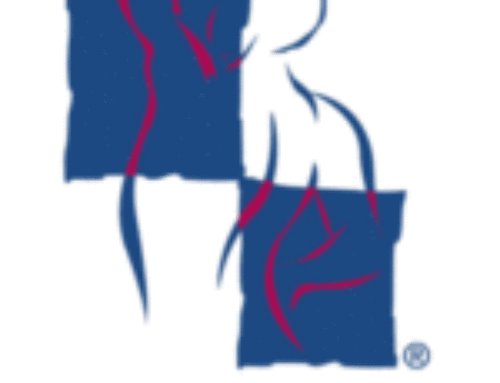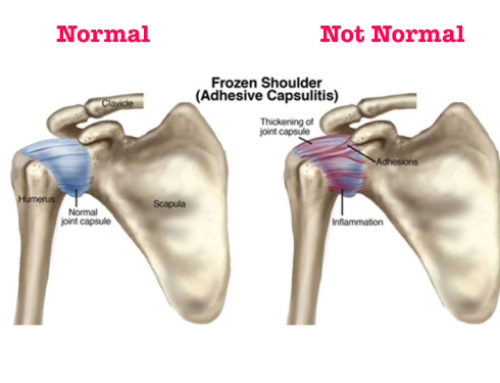SCIATICA
Sciatica is pain that shoots down the leg and radiates in the path of the sciatic nerve is referred to as Sciatic Pain. While there may be more than one type of cause for sciatic pain, the most common culprit is a disc herniation. The sciatic nerve branches down from the low back derived from lumbar & sacral nerve roots (L4, L5, S1, S2, S3).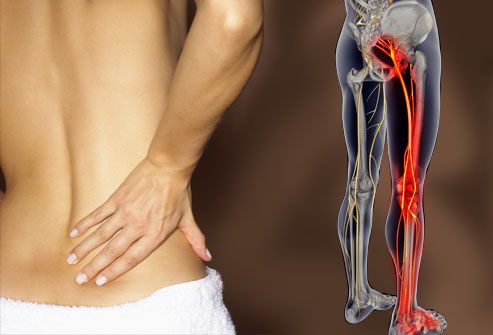
Sciatica can elicit symptoms that travel down the butt, thigh, leg and into the foot. Sciatica can have many presentations and varies in regards to pain intensity, frequency, and how far it radiates down the leg. The severity of your condition is not reflected in the intensity of pain; however, the direct correlation to the severity of your condition is reflected in how far the pain travels down the leg. The further the pain moves away from the spine, the worse the condition. The intensity of the pain demonstrates what the patient can tolerate. If the pain becomes intolerable, there are treatment methods to help with pain tolerance, such as medication, ice, heat, massage, etc.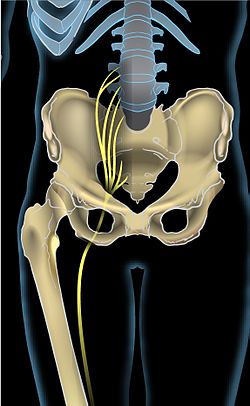
The progression of Sciatica can also demonstrate a worsened state with other symptoms such as leg weakness, numbness, tingling, or bowel/bladder changes. Leg weakness, motor loss, numbness, or tingling can all be reversible if intervention occurs within a reasonable timeframe of onset. The delay of therapeutic intervention with the onset of these symptoms decreases the success rate of fully resolving Sciatica and its associated symptoms.
However, if you are experiences difficulty with bowel or bladder use, please visit your physician or emergency room immediately. The inability to utilize bowel or bladder is a red flag and should not be ignored. In severe cases as such, surgery may be quickly performed to reduce the risk of permanent lower body impairment.
SIGNS & SYMPTOMS:
The symptoms can vary with many presentations.
- Intermittent or Constant Pain
- Numbness, Tingling, Weakness may be Present
- Varying Pain Intensity
- Varying Pain Frequency
- Pain Location Travels & Moves, Typically One Leg, Sometimes Both Legs
- Rapidly Improving or Worsening
- Ranges of Movement in Lumbar Spine Typically Affected
TREATMENTS
Depending on what is producing the sciatic pain will ultimately determine what is necessary for treatment. Some cases of Sciatic Pain, the nerves are damaged from neuropathy such as diabetes, which would result in different treatment.
As we mentioned, it is more common to have Sciatica due to a disc herniation, but an inflammatory state can also be present. If you have Sciatic Pain and demonstrate inflammatory characteristics, anti-inflammatory medication is typically the first step. Eliminating the constant pain attributed from inflammation is necessary to correct the problem. Now that the inflammation has begun to subside, correcting the mechanical component of your lumbar biomechanics is necessary for disc herniation treatment.
As mentioned, the further the symptoms spread down the leg, the worse the condition. This picture demonstrates, PERIPHERALIZATION (pain spreading down into the leg further away from the spine). The picture also demonstrates CENTRALIZATION (pain exiting the legs and moving towards the spine). Pain responses of Peripheralization are a bad sign of the condition. Centralization is the pain response that is necessary for a good outcome.
Mechanical Diagnosis & Therapy are specific exercises that introduce loading strategies onto the lumbar spine to determine which direction to move the lumbar spine to achieve centralization. Soon, upon achieving centralization, we look to abolish the symptoms altogether by progressing the exercises. The expected response always remains the same, but the treatment plan is always different, depending on the individual.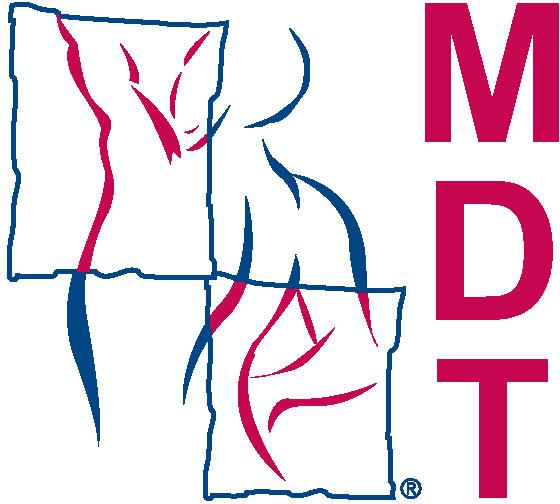
- Centralize the Symptoms
- Abolish Symptoms
- Maintain Abolishment of Symptoms
- Introduce Recovery of Function (introduce previous provocative loading strategies to determine improvement and resolution of condition)
- Preventative Measures (specific exercises for low back health remain necessary as a part of physical health; same as brushing your teeth daily)
Lumbar Epidural Spinal Injections may also be necessary when anti-inflammatory medication is not effective during severe inflammatory states. Other methods of treatment upon failing conservative therapy is surgery. The more common type of surgery in these cases is a discectomy. According to a study conducted 2011, from the Department of Rheumatology, Østfold Hospital Trust, they concluded the success rates at 12 months varied from 49 to 58%.
While surgery is scary, it is sometimes necessary. However, it is always best to exhaust conservative measures first to ensure the need for a more aggressive treatment option such as surgery because there is no guarantee that surgery will resolve your condition. It is clinically interpreted that it MAY help.
Always rule out all conservatives measures first, and if needed, progress to more aggressive forms of treatment.
Being proactive in low back health means continually doing something specific for your low back as is the same for dental care. Everyone brushes their teeth twice a day, flosses, and uses mouth wash as prevention. Preventative measures are about consistency and specificity. Do something that has demonstrated to be effective for you. Taking care of yourself is dependent on you. Active involvement is best for your health.
It is Better to Be Proactive than Reactive to Pain.
If you or someone you know struggles with Disc Herniations or Sciatica. Please share this article. We are here to help.
For more information regarding Mechanical Diagnosis & Therapy, please visit http://www.mckenzieinstituteusa.org/
We are a credentialed office offering Mechanical Diagnosis & Therapy for Spinal & Joint Disorders.
DEDICATED TO GET YOU BETTER THROUGH MOVEMENT
For appointments, call (219)-310-8822
Dr. Artemio Del Real DC, Cert. MDT, CSCS

